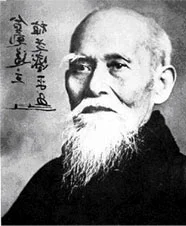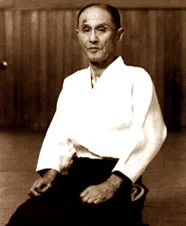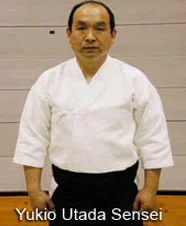Karate (空手?) (English /kəˈrɑːtiː/; Japanese pronunciation: [kaɽate] ( listen); Okinawan pronunciation: IPA: [kaɽati]) is a martial art developed in the Ryukyu Kingdom. It developed from the indigenous martial arts of Ryukyu Islands (called te (手?), literally "hand"; tii in Okinawan) under the influence of Chinese martial arts, particularly Fujian White Crane. Karate is now predominantly a striking art using punching, kicking, knee strikes, elbow strikes and open-hand techniques such as knife-hands, spear-hands, and palm-heel strikes. Historically, and in some modern styles, grappling, throws, joint locks, restraints, and vital-point strikes are also taught.A karate practitioner is called a karateka (空手家?). Karate developed on the Ryukyu Islands in what is now Okinawa, Japan. It was brought to the Japanese mainland in the early 20th century during a time of cultural exchanges between the Japanese and the Chinese. It was systematically taught in Japan after the Taisho era.In 1922 the Japanese Ministry of Education invited Gichin Funakoshi to Tokyo to give a karate demonstration. In 1924 Keio University established the first university karate club in mainland Japan and by 1932, major Japanese universities had karate clubs.In this era of escalating Japanese militarism, the name was changed from 唐手 ("Chinese hand" or "Tang hand") to 空手 ("empty hand") – both of which are pronounced karate – to indicate that the Japanese wished to develop the combat form in Japanese style.After World War II, Okinawa became an important United States military site and karate became popular among servicemen stationed there. The martial arts movies of the 1960s and 1970s served to greatly increase the popularity of martial arts around the world, and in English the word karate began to be used in a generic way to refer to all striking-based Oriental martial arts.Karate schools began appearing across the world, catering to those with casual interest as well as those seeking a deeper study of the art.
The term 'iaido' appear in 1932 and consists of the kanji characters 居 (i), 合 (ai), and 道 (dō).The origin of the first two characters, iai (居合?), is believed to come from saying Tsune ni ite, kyū ni awasu (常に居て、急に合わす?), that can be roughly translated as “being constantly (prepared), match/meet (the opposition) immediately”.[11] Thus the primary emphasis in 'iai' is on the psychological state of being present (居). The secondary emphasis is on drawing the sword and responding to the sudden attack as quickly as possible (合). The last character, 道, is generally translated into English as the way. The term 'iaido' approximately translates into English as "the way of mental presence and immediate reaction",and was popularized by Nakayama Hakudo. The term emerged from the general trend to replace the suffix -jutsu (術?) ("the art of") with -dō (道?) in Japanese martial arts in order to emphasize the philosophical or spiritual aspects of the practice.
 Aikido (合気道, aikidō) is a Japanese martial art developed by Morihei Ueshiba as a synthesis of his martial studies, philosophy, and religious beliefs. Aikido is often translated as "the Way of unifying (with) life energy" or as "the Way of harmonious spirit." Ueshiba's goal was to create an art that practitioners could use to defend themselves while also protecting their attacker from injury.
Aikido derives mainly from the martial art of Daitō-ryū Aiki-jūjutsu, but began to diverge from it in the late 1920s, partly due to Ueshiba's involvement with the Ōmoto-kyō religion. Ueshiba's early students' documents bear the term aiki-jūjutsu. Many of Ueshiba's senior students have different approaches to aikido, depending on when they studied with him. One of those students is Gozo Shioda, founder of Yoshinkan Aikido.
Aikido (合気道, aikidō) is a Japanese martial art developed by Morihei Ueshiba as a synthesis of his martial studies, philosophy, and religious beliefs. Aikido is often translated as "the Way of unifying (with) life energy" or as "the Way of harmonious spirit." Ueshiba's goal was to create an art that practitioners could use to defend themselves while also protecting their attacker from injury.
Aikido derives mainly from the martial art of Daitō-ryū Aiki-jūjutsu, but began to diverge from it in the late 1920s, partly due to Ueshiba's involvement with the Ōmoto-kyō religion. Ueshiba's early students' documents bear the term aiki-jūjutsu. Many of Ueshiba's senior students have different approaches to aikido, depending on when they studied with him. One of those students is Gozo Shioda, founder of Yoshinkan Aikido.
 Aikido Yoshinkan (合気道 養神館) (trans. Hall for Cultivating the Spirit) is a style of aikido founded by Gozo Shioda (1915-1994) after World War II. Yoshinkan Aikido is occasionally called a "hard" style because the training methods are a product of the gruelling period that Sōke Shioda spent as a student of Morihei Ueshiba before the war. As a style of aikido it is more akin to the prewar Aiki Budo techniques taught by O Sensei, and therefore also generally closer to aikijujutsu than those styles of aikido developed post-war. The unusual emphasis placed on correct form rather than correct flow and timing further contributes to its image as a "hard" style. However, the merit of such terms as "hard" and "soft" is generally believed to lie in the superficial level of describing a style's "feel", rather than saying anything about the heart of the style itself.
Aikido Yoshinkan (合気道 養神館) (trans. Hall for Cultivating the Spirit) is a style of aikido founded by Gozo Shioda (1915-1994) after World War II. Yoshinkan Aikido is occasionally called a "hard" style because the training methods are a product of the gruelling period that Sōke Shioda spent as a student of Morihei Ueshiba before the war. As a style of aikido it is more akin to the prewar Aiki Budo techniques taught by O Sensei, and therefore also generally closer to aikijujutsu than those styles of aikido developed post-war. The unusual emphasis placed on correct form rather than correct flow and timing further contributes to its image as a "hard" style. However, the merit of such terms as "hard" and "soft" is generally believed to lie in the superficial level of describing a style's "feel", rather than saying anything about the heart of the style itself.
Shioda formed the Yoshinkan style of aikido because he felt that there needed to be greater consistency in the training process for students, so he created a structured method in which beginning students would learn the foundation techniques. Techniques are made up of elements such as the initiating attack, the applicable control and whether it is a pin or throw. They are further divided into two groups called ichi (number 1) and ni (number 2) techniques. Ichi (Number 1) techniques have a feeling of the energy moving away from you, often with your partner, or uke, pulling. Ni (Number 2) techniques have a feeling of the energy coming towards you. The feeling for an ichi (number 1) technique is that you go with the pull and for ni (number 2) you divert or pivot away from the push. This is very simplified, but it is the general idea.
Yoshinkan Aikido has some 150 kihon waza (lit. "basic techniques" in Japanese), which are practiced repeatedly. Proficiency in these enable the student to master the remaining ones, which total some 3000 overall. The syllabus contains no weapons forms, although they are practiced as an adjunct to the open hand techniques. Like many styles of aikido, Yoshinkan eschews competition; instead, it emphasizes self defense applications. Yoshinkan aikido is one of the martial arts that has been taught to the Tokyo police.
 Doshinkan aikido, begun by Yukio Utada, 7th dan, of Yoshinkan aikido. Utada was a student of both the Yoshinkan founder Gozo Shioda and Yoshokai founder Takashi Kushida. Like Yoshokai, the syllabus also includes a considerable amount of weapons study. Like Yoshinkan, Doshinkan includes many solo exercises and movements. Doshinkan Aikido of North America and Doshinkan International maintain ties with the Yoshinkan through formal affiliation with the International Yoshinkan Aikido Federation.
Yukio Utada was born in Tokyo, Japan in 1948. The youngest of 9 children, he excelled athletically since a very young age. He was exposed to various Japanese martial arts but was determined to find an art that developed not only the body but also elevated the human spirit.
Doshinkan aikido, begun by Yukio Utada, 7th dan, of Yoshinkan aikido. Utada was a student of both the Yoshinkan founder Gozo Shioda and Yoshokai founder Takashi Kushida. Like Yoshokai, the syllabus also includes a considerable amount of weapons study. Like Yoshinkan, Doshinkan includes many solo exercises and movements. Doshinkan Aikido of North America and Doshinkan International maintain ties with the Yoshinkan through formal affiliation with the International Yoshinkan Aikido Federation.
Yukio Utada was born in Tokyo, Japan in 1948. The youngest of 9 children, he excelled athletically since a very young age. He was exposed to various Japanese martial arts but was determined to find an art that developed not only the body but also elevated the human spirit.
Mr. Utada discovered these qualities at the Yoshinkan Aikido Hombu Dojo in Tokyo. There he found a place radiating with energy and excitement. The dojo training was dynamic, magnetic in its pull. Mr. Utada committed himself wholeheartedly to aikido training, devoting himself fully to the art. He was fortunate in choosing as his teacher the founder of Yoshinkan aikido, Gozo Shioda Kancho, who had been a student of the great Morihei Ueshiba, the founder of modern aikido.
Mr. Utada immersed himself in the study of aikido, following as he would later refer to his own "invisible path." After training for only nine months, at the age of 19, Mr. Utada distinguished himself in an unprecedented fashion by attaining his first-degree black belt. In 1972, Mr. Utada journeyed to the United States accepting an invitation to teach Yoshinkan aikido in Detroit, Michigan.
The following year Mr. Utada was joined by Kushida Sensei who was the chief instructor of the Hombu dojo at that time. Mr. Utada assisted Kushida Sensei in establishing the presence of Yoshinkan aikido in the United Sates. He underwent traditional uchi-deshi (live-in student) training prior to relocating to Philadelphia.
Over the next seventeen years Mr. Utada maintained strong ties with Kushida Sensei. This student-teacher relationship allowed Mr. Utada to deepen his understanding of aikido and continue to grow as a professional instructor.
With few resources but a vision of the Yoshinkan school he wanted to build, Utada Sensei opened his first Philadelphia dojo in 1974. From meager beginnings, the spartan school evolved in time into the Aikido Association of North America (AANA). In 1991, Utada Sensei saw an opportunity to move his school to its present location in Philadelphia. The Doshinkan Dojo, located in a freestanding structure, is one of the finest such facilities on the East Coast. This beautiful building and grounds serve as both school and headquarters for the AANA. The dojo is a superb space to showcase the dynamic aikido taught within.
Since its founding, the Doshinkan dojo has continued to flourish establishing several affiliate schools in the greater Philadelphia area. In addition, Utada Sensei has been a faculty member of Temple University since 1974, Over the years, his popular classes have brought aikido to thousands of students in and around greater Philadelphia. Utada Sensei has also showcased aikido at University of Pennsylvania, Beaver College, Haverford College, and Rutgers University to name a few.
Mr. Utada is a registered Shihan who was awarded the rank of 7th dan ranking in Yoshinkan aikido by Soke Gozo Shioda. For more information about Utada sensei's seminar and appearance schedule, contact us at the address below.